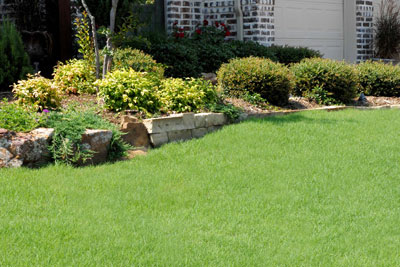Question of the Week Number 1: April 2, 2020
“My lawn has been puny looking. How can I get it to thicken up?”
With so many people at home noticing their lawns more than ever, I’m hearing this a lot. I see people going about it the hard way. I have some better ideas. Here are your guidelines.
Six steps to healthier turf…
1. Be certain there’s enough sunlight. Remember that no sod farm is in the shade – all grasses grow best in full sun.
Bermuda lawns need at least 7 to 8 hours of hot, direct sunlight daily during the growing season. More would be better.
Zoysias need 6 hours of sunlight.
St. Augustine needs 5 or 6 hours in North Texas, and 4 hours in South Texas. (Less there because it rarely goes dormant due to warmer winter temperatures, and it doesn’t have to ramp up new growth in the spring.

2. Mow at the correct height. It may be lower than you think. Some people have the mistaken idea that they should “mow high.” Some even tell me that they have their mowers set on the highest option available. That’s usually upwards of 4 inches, while the recommended mowing height for bermuda is 1-1/4 and St. Augustine 2 to 2-1/2 inches. Tall grass quickly weakens and allows weeds to invade.
3. Mow regularly so that you never remove more than 1/3 of the grass blades’ length. That may translate to 5-day intervals in summer when the grass is growing most actively. If you have a mowing crew that comes by once a week, that may not be good for your lawngrass.
4. Water deeply, then let the top of the soil dry somewhat before you water again. Many people apply water in small bursts of 10 or 20 minutes every day without knowing how deeply it penetrates or whether their ground is staying way too wet. If you have a sprinkler system, have a “smart” controller installed.
5. Apply an all-nitrogen fertilizer that has upwards of half of that nitrogen in slow-release form for sustained feeding. Fertilize in early April, early June and early September for St. Augustine. Feed bermuda every two months beginning now and ending in early October.
6. Watch for common pest problems. cottony blight bothers bermuda, most commonly in late summer and early fall. White grub worms’ damage will be in fall or early spring. For St. Augustine, it could be take all root rot (now), gray leaf spot (summer), chinch bugs (summer), brown patch (fall) and possibly white grub worms (fall, damage perhaps showing up in the spring).
